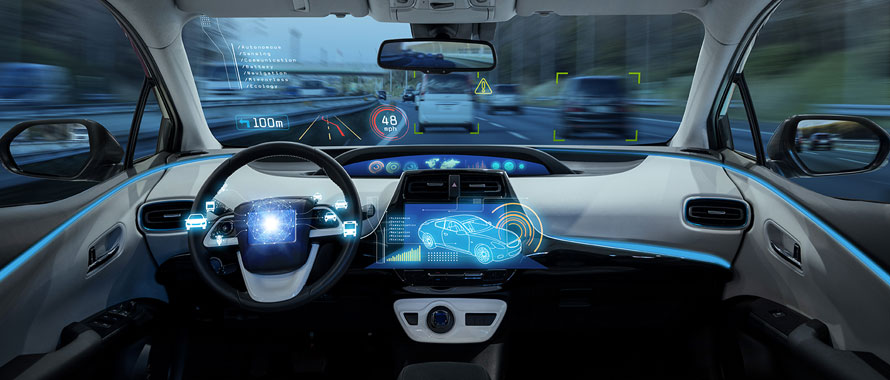
Autonomous vehicles (AV) are changing the way the world drives. Yet this emerging industry is also changing how technology companies think about limiting liabilities in case their products do not work as intended.
In the aftermath of the death of a pedestrian struck by an Uber self-driving vehicle on March 18 in Arizona, the future of the company’s self-driving program is in question. Uber has said it will not renew a permit to test robotic cars in California, days after saying it would suspend self-driving operations in all cities.
The pedestrian death also has prompted Toyota and Nvidia, which supplies chips for Uber’s self-driving cars, to temporarily halt their efforts to test self-driving vehicles on public roads. Meanwhile, Tesla is facing concerns about its Autopilot driver-assist technology as federal investigators probe a March 23 fatal crash that involved a Tesla Model X SUV.
For companies in the AV sector, Technology Errors and Omission (E&O) coverage can help reduce liabilities in a changing and often uncertain marketplace.
Whether providing tech services or products, it is important to obtain insurance to protect an organization, or individual, against the financial losses associated with possible litigation.
According to some legal experts, the death of the 49-year-old woman in Arizona could offer a test of who could be held liable for accidents when a human is not in control at the wheel.
“Technology E&O can help protect against such legal claims,” said Michael Schultz, Senior Broker, Professional Liability Center of Excellence, Burns & Wilcox, Detroit/Farmington Hills, Mich. The coverage protects against the risk of errors, omissions or negligence in relation to hardware, software and online services.
Risk along the supply chain
Whether providing tech services or products, it is important to obtain insurance to protect an organization, or individual, against the financial losses associated with possible litigation, Schultz said. In the Uber AV tragedy in Arizona, damages could rise into the millions of dollars – though the question of the source of the liability is evolving.
“With any type of insurance, you need to look at what type of potential liability an organization or person will assume,” Schultz said. “In the case of autonomous vehicles and technology in general, we’re seeing a paradigm shift.”
That shift even began as various safety features in a vehicle, such as blind spot detection, were introduced to consumers.
“You can look at the full supply chain to see where fault may lie,” Schultz said. “It could be a software developer or the vehicle. It could be a chip maker.”
In the past with motor vehicle accidents, the liability often fell on the driver. With autonomous vehicles in general, and with the Arizona case specifically, it is unclear where the liability falls.
There is a difference between Technology E&O and General Liability, according to Ken LaBelle, Brokerage Director, Burns & Wilcox Brokerage, Chicago, Ill.
There could be more than 20 billion connected devices worldwide by 2020, and all of those connected devices, from medical devices to motor vehicles to children’s toys, could be open to liability.
The most important difference lies in what incidents are covered by each policy. Technology E&O protects clients in the event that a technology consultation or a software error results in financial losses, LaBelle said.
“For example, some clients require a policy that will cover a new financial program for accountants to manage reports more efficiently. If the program causes an error or produces incorrect results, it could lead to a financial loss,” LaBelle said.
AV industry growth drives Technology E&O demand
The need for Technology E&O coverage is rising dramatically, and Schultz said it is one of the fastest-growing insurance products in the market. A January 2017 study by Gartner indicated there could be more than 20 billion connected devices worldwide by 2020, and all of those connected devices, from medical devices to motor vehicles to children’s toys, could be open to liability, Schultz added.
According to IHS Automotive, an online hub for automotive research and forecasting, between now and 2035, about 76 million vehicles with some level of autonomy will be sold worldwide.
The liability limits for Technology E&O can be set as high as needed; there’s a minimum premium of $1,000 for a $1 million limit. Technology E&O coverage is broadly defined for technology services with flexibility to include additional professions and services. It should include data privacy coverage and optional first-party coverage for the insured’s expenses to recover from unauthorized access. Contingent bodily injury and property damage coverage for when technology fails may be available. Any technology that provides access to the internet may also be covered under this type of insurance for data hacks and viruses.
“What clients need to consider is if they need to extend or increase their policies. With all of the potential exposures, Technology E&O really is not a supplemental coverage anymore,” Schultz said. “It is why they need to speak with their insurance broker to understand the coverage they will need.”
As with any coverage need, an insurance broker or agent must be consulted. Click here to forward this article to your insurance broker or agent to ask if you need this coverage, or share with clients to start the conversation and ensure proper protection.
This information was provided by Burns & Wilcox, North America’s leading wholesale insurance broker and underwriting manager. Burns & Wilcox works exclusively with retail insurance brokers and agents to assist clients like you with their specialty insurance needs. Ask your insurance broker or agent if a Tech E&O policy is right for you.